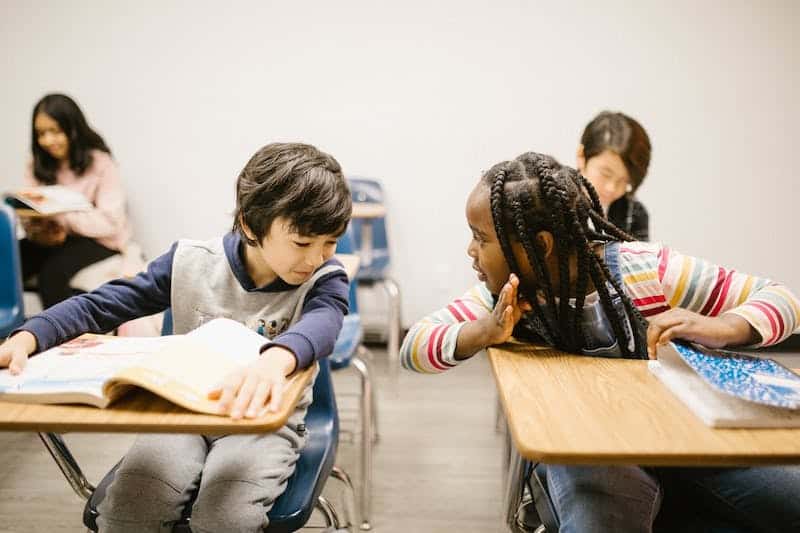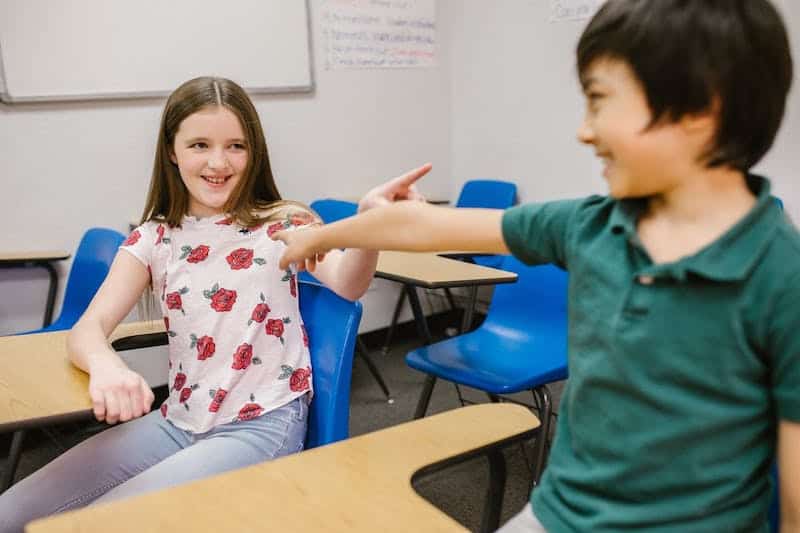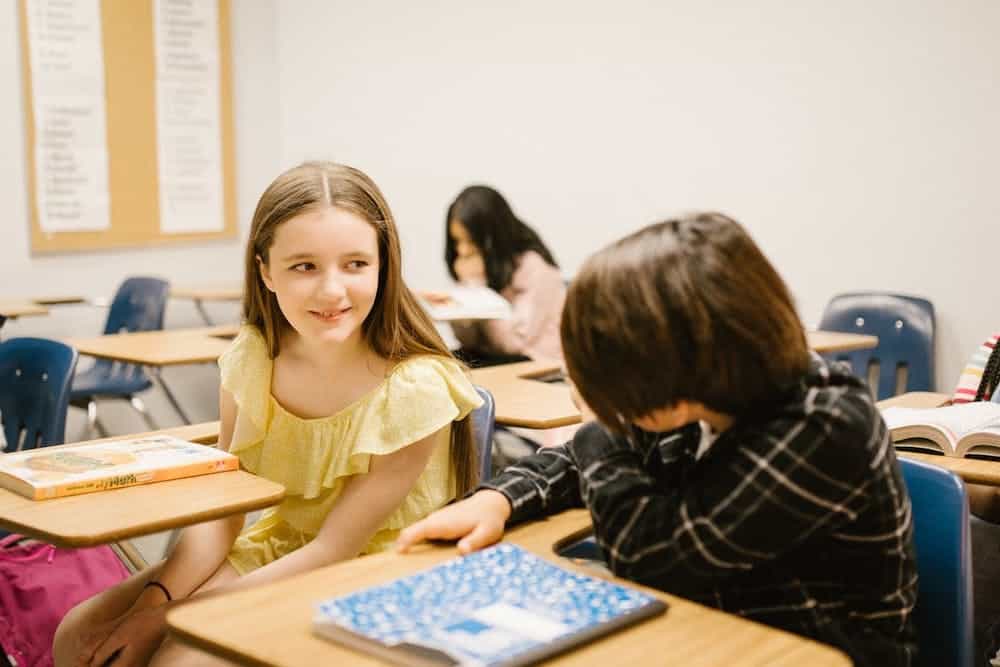The importance of teaching kindness to elementary students cannot be overstated. (Harvard) Students rely on two aspects of the classroom to learn valuable life lessons. Overtly, students rely on lessons and planned curriculum. On a more subtle, but no less important level, students learn from interpersonal interactions with their teachers and fellow students.
When it comes to teaching kindness in the classroom, both overt and subtle strategies can come into play. Kindness activities for kids can be incorporated into the curriculum. Furthermore, a general policy promoting kindness through action is important.
Teaching Kindness in the Classroom

When educators teach kindness, they will need to pay attention to their own behaviors. Since kindness is a learned behavior, children will watch the way their teachers, parents, and fellow students act. Children will also look for cues in their communities to show them how to behave in different social situations. Kids constantly observe and mimic adults. They understand when adults are only saying they value kindness and empathy when in reality, they are making selfish decisions. (Today) Therefore, it’s important to display genuine kindness.
The minds of children are sponges. Everything they see will guide and reinforce their behavioral choices. Here are some recommendations (PBS):
- Model kindness: Think through the regular interactions during a day that students might see (e.g. waiting in line for a drink, borrowing a pencil), and be careful to approach those interactions with kindness.
- Intentionally teach empathy: Whenever possible, incorporate intentional messages of empathy into discussions of social interactions, for example, when addressing conflict in the classroom.
- Celebrate acts of kindness: Rewards help reinforce behaviors. If students learn to associate acts of kindness with positive reinforcement in the classroom, it will help them to learn to associate kindness and positive outcomes.
- Regular meetings: Since kindness is a learned behavior, facilitating opportunities for students to take ownership of their actions reinforces positive behaviors. Educators can incorporate class meetings with regular conversations that prompt students to discuss acts of kindness. This creates a tool for students to encourage each other and reinforces lessons.
- Emphasis on friendship: Children might not all be best friends with one another, but they can learn solidarity and care for one another. Students can learn that communities should watch out for each other and take care of each other. Recognizing that friendship means caring is a valuable lesson for children to help them lead rewarding lives.
Teaching kindness in the classroom has to be approached holistically. Many lessons in kindness will be incidental to behaviors and interactions throughout the day.
Kindness Activities for Kids

It’s valuable to reinforce lessons learned through interactions with more intentional learning activities.
There are many resources available to educators that promote teaching kindness. Soul Shoppe’s Tools of the Heart is a comprehensive online program that teaches social emotional skills, including kindness, empathy, and connection.
Here are some additional ideas to get you started (NaturesPath):
- Cooperative activities: Activities that require cooperation between students in order to achieve goals provide ample opportunities for children to practice kindness, especially if educators are there to moderate and guide interactions. Activities like outdoor team sports or playing board games on teams put students in situations where they can practice kindness.
- Volunteering opportunities: Field trips to volunteer at animal shelters, homes for the elderly, or food banks give children chances to practice kindness in immersive contexts.
- Write letters to soldiers on active duty. Writing letters to cheer up soldiers who are deployed away from their families and friends promotes writing skills and demonstrates an act of kindness.
- Bake cookies for local heroes: Firefighters, local police departments, EMTs, first responders, nurses, etc. all work long shifts. Bringing them sweets, whether baked or bought, is a simple act of kindness to brighten their days.
- Engage in community fundraising for charity: Students can write letters to local businesses asking them for donations to a specific charity, for example, Rise Against Hunger. This helps students take an active role in raising funds for charities and teaches them to utilize the community resources that are available, rather than just their own means to enact kindness.
- Practice compassion through the power of role play: Create a group assignment where students write and produce a play about an act of kindness. Teaching kindness to kids is powerful when educators guide them in a way that ultimately helps kids teach themselves.
- Reading: There are a lot of books out there about kindness. (ReadBrightly) Never underestimate the power of stories as teaching tools. Find a book list with kindness as its central theme and assign some reading.
When it comes to teaching kindness in the classroom, educators must approach it from an understanding that children learn by both watching and participating. If an educator would like assistance with teaching kindness in the classroom, you can receive help with virtual social learning activities. Soul Shoppe provides social emotional learning programs for children and educators that are available online and in schools.
Soul Shoppe strategies encourage kindness in children. Whether helping in the classroom or assisting parents at home, Soul Shoppe brings kindness to the forefront of the discussion. Click for more information on SEL Programs for Elementary Schools or our parent support programs.


